There are many architectural jewels in Azerbaijan. When you travel to this nation especially it’s capital Baku you will find numerous colossal late 19th-century neoclassical structures but the Walled City of Baku with the Shrivanshah’s Palace and Maiden Tower are special in their own ways. These ancient monuments are quite captivating and consequently got a name and as heritage sites of UNESCO.
Whats makes them so special that they are in the Heritage Sites of Azerbaijan? Check it out with us.
First Know About Walled City of Baku
Azerbaijan’s capital Baku housing half of the country’s population and houses many attractive sights to behold. The most prominent one is the Walled City of Baku With the Shrivanshah’s Palace and Maiden Tower. Talking about the Walled City of Baku, it is a unique and remarkable example of a mediaeval urban group. This heritage site’s architecture was influenced by Zoroastrians Arabs, Persians, Shirvanis, Sassanians, Russian, Ottomans civilizations.
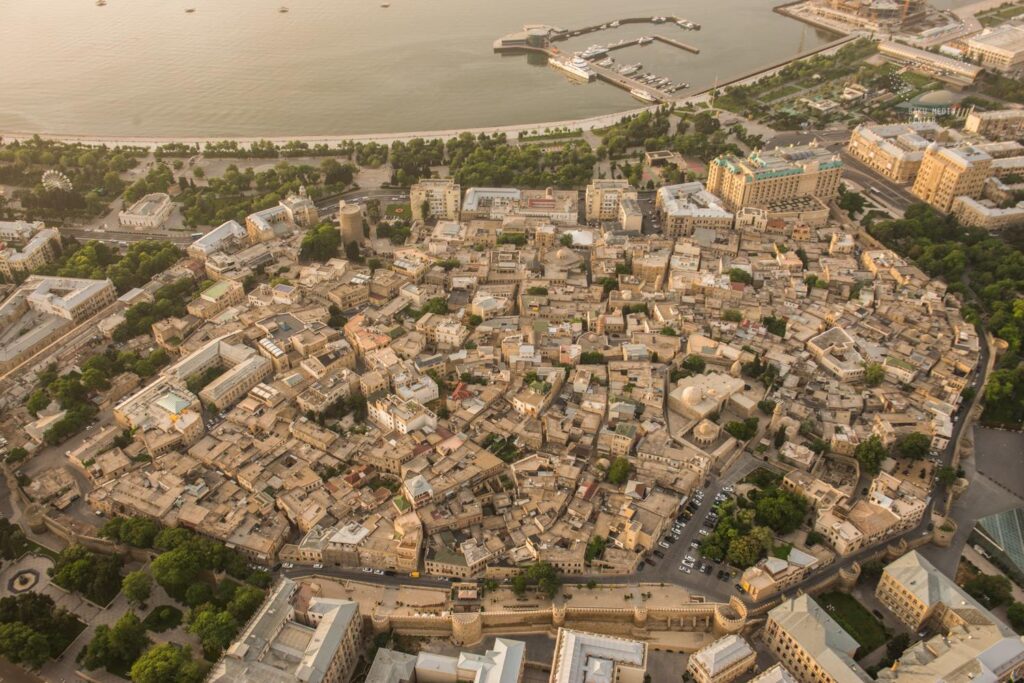
Many of the inner city’s 12th-century defensive walls are still surviving. The Old City is a maze of narrow alleyways dotted with antique homes. Also, it has a number of historical-architectural relics from the mediaeval period, including caravanserais, hamams (bath-houses), mosques and residential buildings from the 18th to 20th century.
Shirvanshah’s Palace
The Shirvanshahs established the Palace of the Shirvanshahs in the 15th century, which UNESCO calls one of Azerbaijan’s architectural gems. It is located in Baku’s Inner City the mediaeval town and is the most significant example of Shirvanshah dynasty architecture in Azerbaijan. It is a part of a complex of historic sites that includes the Maiden Tower too.
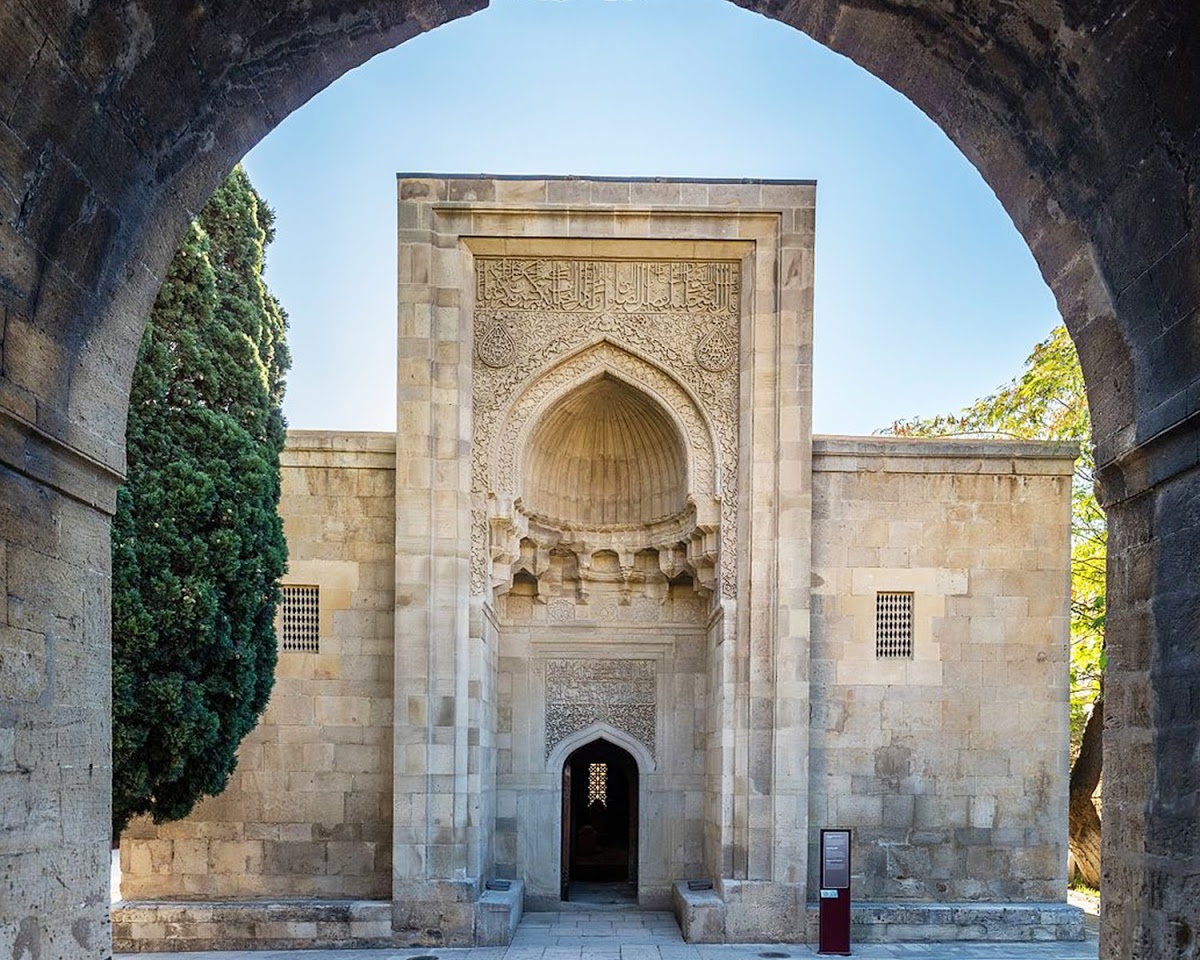
The palace’s main building, Divanhane, the burial vaults, the shah’s mosque with a minaret, Seyid Yahya Bakuvi’s mausoleum south of the palace, a doorway in the east, Murad’s gate, a reservoir, and the remains of a bathhouse are all located within the complex. Previous to the mausoleum, there was an ancient mosque.
On the palace itself, no inscriptions have remained. Only the tomb and minaret of the Shah’s mosque have entire copies of these two inscriptions. In both inscriptions, the name of the prince who authorised the construction of these structures is Shirvan Khalil I.
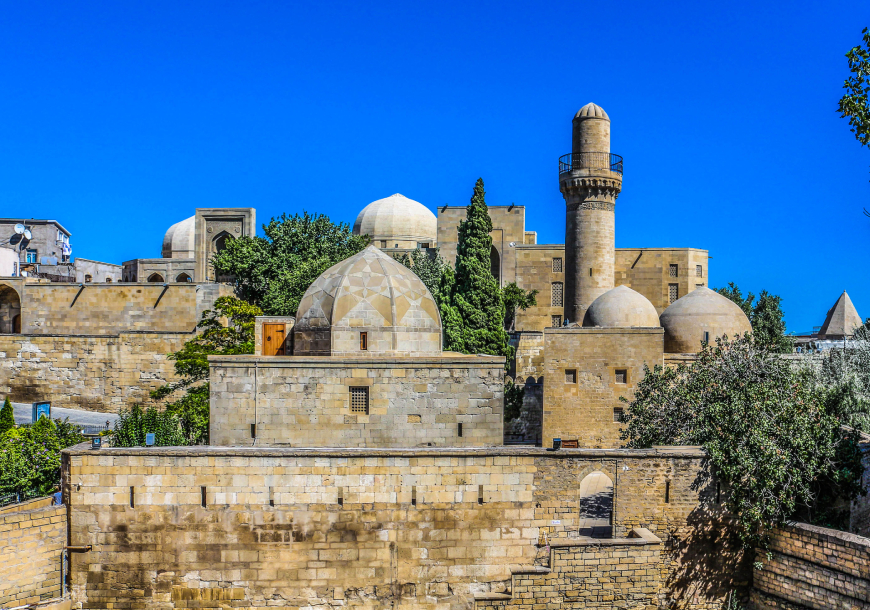
The palace complex was recognized as a museum preserve in 1964 and placed under state protection. This complex, along with the old city’s fortified walls and the Maiden Tower, was included on the UNESCO World Heritage List in 2000.
Also Read: Discover Ancient Qal’at al-Bahrain – Heritage Site of Dilmun
Maidan Tower
Maiden Tower is known among locals as the Qiz Qalasi / Giz Galassi. This UNESCO World Heritage site is located inside the walled city of Baku. It is a cylindrical eight-story building that is 29.5 metres tall. Built in the 12th century, this extraordinary edifice shines into the skyline and is one of the city’s most distinctive structures.
The museum inside the Maiden Tower provides information about the history, culture, and revolution of the Walled City of Baku.
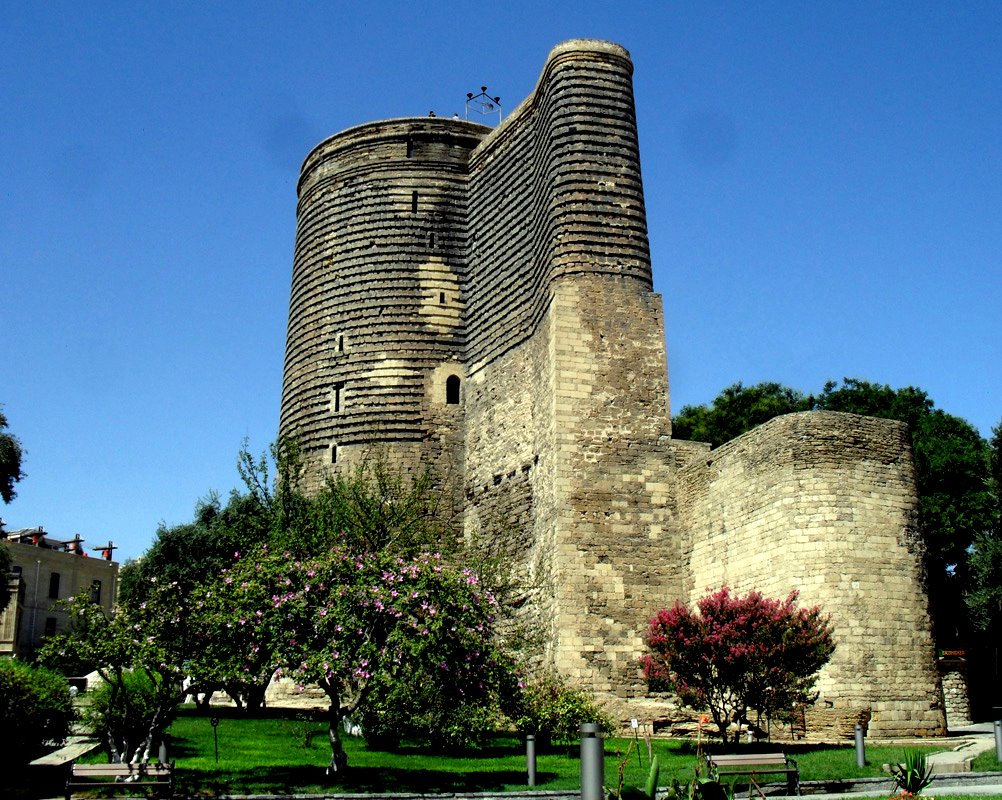
Adventurers with a sense of daring can climb the tower’s stairs to reach the top, where they’ll be rewarded with stunning views over the Caspian Sea and the city below.
Despite the “Walled” designation, the medieval city center isn’t fully enclosed anymore. Only the western and northern sides still are fortified. It is climbable via an inner staircase, you’ll see that there’s a cistern hidden inside.
Other Noticeable Things at Walled City of Baku
Despite its “Walled” title, the mediaeval city core is no longer surrounded. Only the western and northern sides of the fortifications remain. It can be climbed through an inside stairway, and there is a cistern hidden within it.
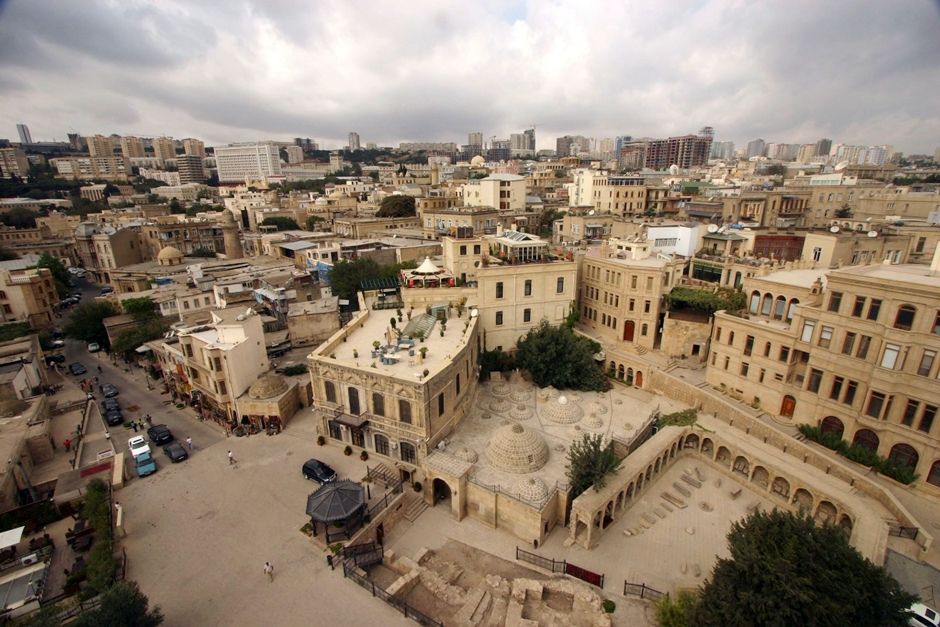
The entire complex is walkable and has low traffic. There are numerous eateries around for a cup of tea or a kebab, as well as outdoor art.
Modern architecture devotees will find a masterpiece in Baku, such as the Heydar Aliyev cultural centre, designed by the recently dead Zaha Hadid. The three exquisite Flame Towers will grab your attention from distance, especially when backlit in yellow and red in the evening.
Current Status of Walled City of Baku
Soon after the property was established, the fabric of parts of the structures within the Walled City began to erode, partly as a result of an earthquake, but also as a result of illegal destruction and uncontrolled development. In 2009, the property was removed from the List of Endangered World Heritage Sites.
Protection & Management of Heritage Site
The Walled City of Baku and its protected area have been declared as National Monuments and are protected. The buffer zone is governed by a Decree issued by the Cabinet of Ministers, while the inner city is preserved by Presidential Decrees from 2005 and 2007.
Instead of the Ministry of Culture and Tourism and the City of Baku, the Administration of the State Historical-Architectural Reserve “Icherisheher” (SHAHAR), established under the Cabinet of Ministers. It was assigned complete responsibility for the management of the property in 2007.
Many portions of the land still have authentic mediaeval street vistas, and care must be taken to preserve them where possible. Controls on the development of the city’s larger environment are also required to guarantee that the city preserves its links to the sea and does not become a little island surrounded by high-rise projects.
Also Read: Explore Gobustan Rock Art Cultural Landscape at Azerbaijan

